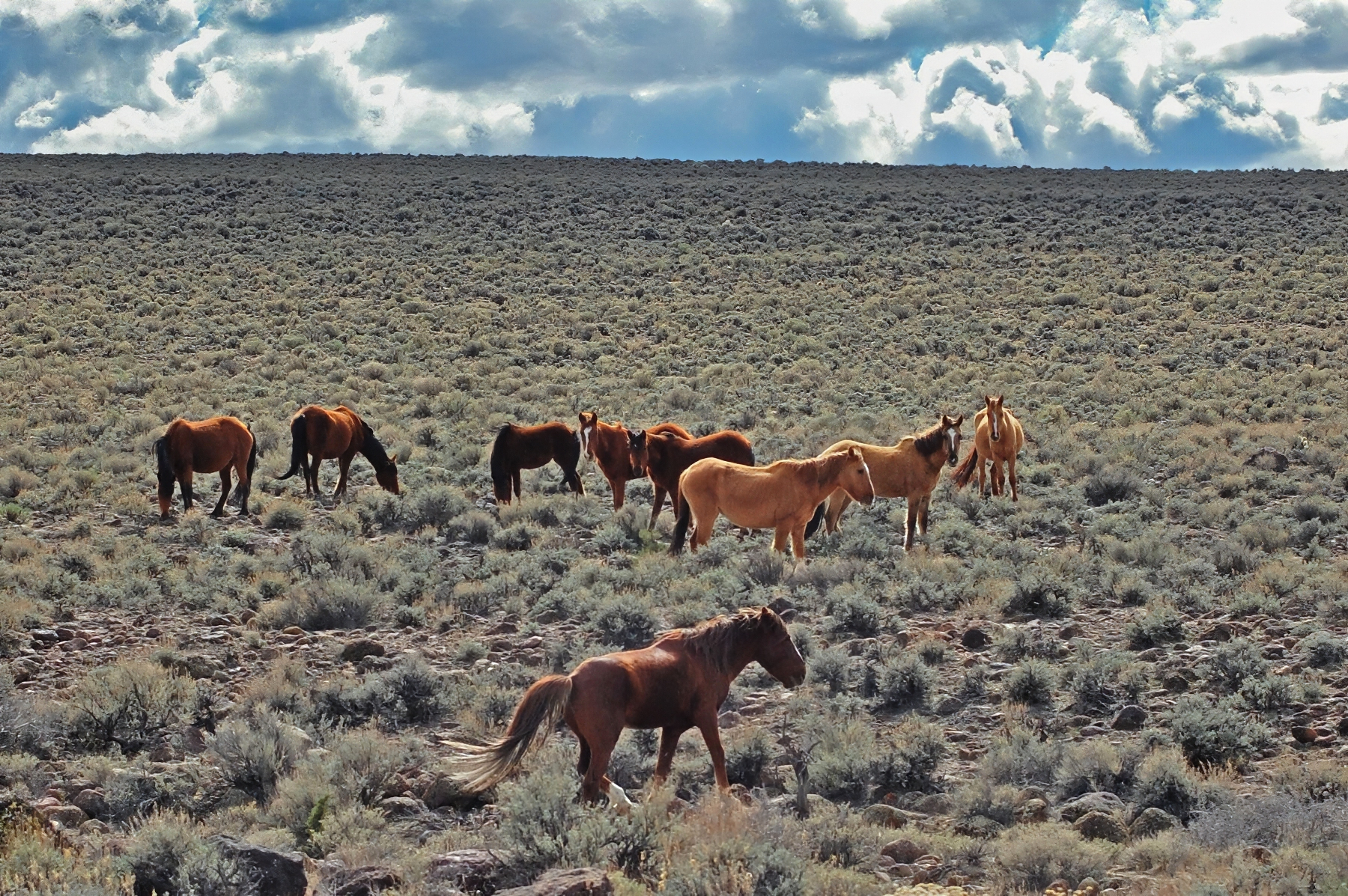On March 30, U.S. District Court Judge Randolph Moss ruled that the Bureau of Land Management cannot continue to conduct “maintenance” wild horse roundups under its 10-year plans after the agency achieves so-called appropriate management levels—the arbitrary number of wild horses that the agency determines can exist in balance with other public rangeland species, resources and uses in an area.
This victory impacts Utah’s wild horses who call Muddy Creek and Onaqui Mountains home as well as those in Nevada who roam the Pine Nut Mountains and Eagle Complex.
“It is gratifying that the Court agreed with FoA that BLM does not have unbridled discretion to conduct what it calls ‘maintenance gathers’ without consulting outside experts and considering new and current scientific information,” said Jennifer Best, director of Friends of Animals Wildlife Law Program. “The truth is there is no scientific evidence that there is an overpopulation of wild horses on federal public lands.
“In particular, the Court said BLM cannot continue to round up wild horses in the Muddy Creek herd management area without a new decision because it already conducted roundups that brought those wild horse populations within the appropriate management levels. Similarly, BLM already conducted roundups that brought the Onaqui Mountain herd management area within appropriate managements levels and should not continue to round up wild horses under its earlier decision. We are optimistic this victory will mean an end to all of BLM’s long-term decisions where it rounds up wild horses for 10 years at a time without taking public comment or examining the latest data.”
Friends of Animals filed its lawsuit challenging the 10-year management plans in 2018.
“BLM took this type of long-range, but short-sighted, approach to manage wild horses to avoid further scrutiny of its overall plan to virtually zero out wild horse populations on public lands,” Best said.” We couldn’t stand by and do nothing.”
In the lawsuit, FoA stated that BLM disregarded its statutory and regulatory obligation to undertake roundup-specific analysis of the horses and their habitat and ignored its responsibility to ensure public participation in such decisions. It also stated BLM increased the likelihood that future wild horse removals and fertility control treatments would be based on obsolete forage data and outdated appropriate management level data.
In the March 30 decision, Judge Moss agreed, saying that “although Congress vested the Bureau with broad discretion, it also took steps to ensure that the Bureau based its decisions on accurate information and science, rather than pressure from interest groups or guesswork.”
FoA has been railing against outdated appropriate management levels and pressing the BLM to adjust them to accommodate more horses for years. BLM has sacrificed the protections Congress afforded wild horses 50 years ago in the Wild and Free-Roaming Horse and Burro Act of 1971 by restricting them to just 26.9 million acres (which has been and continues to decrease each year under BLM management), which they must share with doomed cattle and sheep. Upwards of 2 million cattle graze public lands, not to mention sheep, and the government has authorized thousands of oil, gas and mineral extraction projects on these areas as well.
“BLM wishes to leave on our public lands less than 26,000 horses. This is an abomination and a national disgrace,” Best said.

